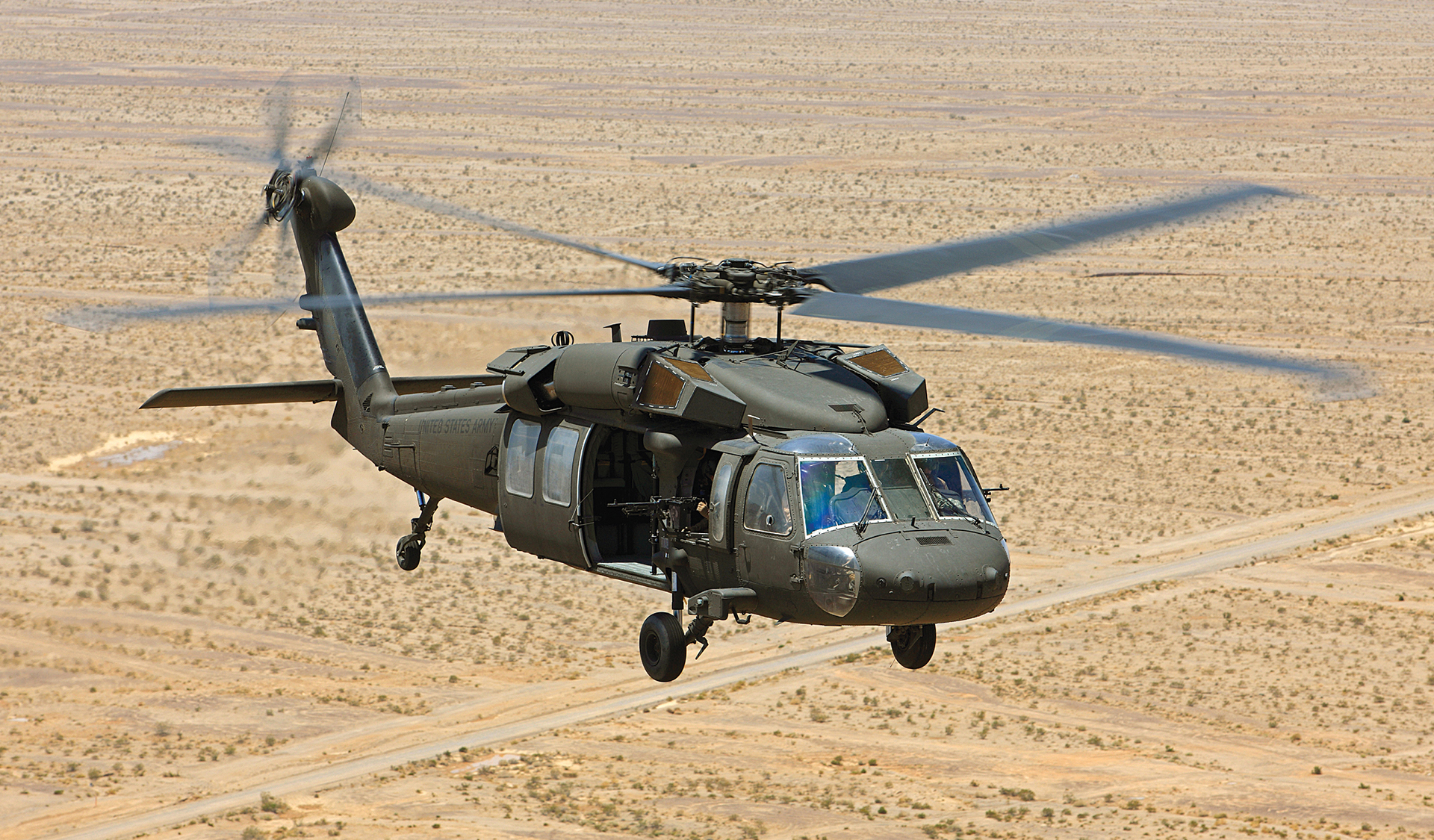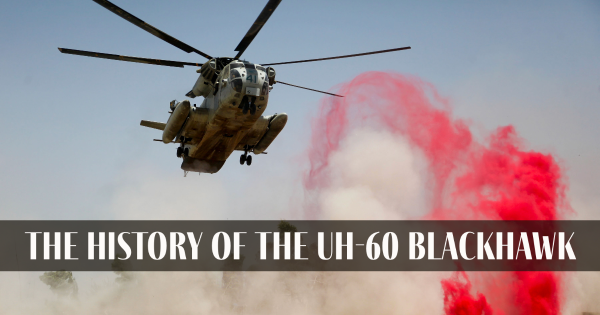Accomplishing Quality: Key Strategies for UH 60 Helicopter Maintenance
Accomplishing Quality: Key Strategies for UH 60 Helicopter Maintenance
Blog Article
Comprehending the Mechanics and Engineering Behind Uh 60 Helicopters
The UH-60 helicopter, typically referred to as the Black Hawk, stands as a pinnacle of modern rotorcraft modern technology, embodying a blend of robust engineering and elaborate auto mechanics. From its creation to its existing models, the development of this aircraft showcases a fusion of technology and practicality. As we peel back the layers of the UH-60's style, a world of elaborate systems and thorough design comes to light. Comprehending the technicians and design behind this versatile airplane introduces a realm where precision meets power, and where each component plays a critical function in attaining flight.
Background of UH-60 Helicopters
The background of UH-60 helicopters traces back to the late 1970s when the USA Military looked for a flexible and advanced utility helicopter to replace its aging fleet. In action to this need, the Sikorsky Aircraft Corporation established the UH-60 Black Hawk helicopter. Introduced in 1979, the UH-60 rapidly came to be a staple in army operations due to its excellent capacities.
The UH-60 was developed to master a range of goals, consisting of army transportation, clinical emptying, electronic warfare, and special procedures. Its capability to adapt to various functions made it a useful property to the united state Army and other army forces around the world
For many years, the UH-60 system has undergone a number of upgrades and variations to boost its performance and equal advancing goal needs. These helicopters have actually seen considerable solution in disputes such as the Gulf War, Afghanistan, and Iraq, showcasing their dependability and flexibility in diverse functional settings. The UH-60's rich background is a testament to its long-lasting tradition as a leading utility helicopter.

Engine and Power Systems
Using cutting-edge propulsion innovation, UH-60 helicopters are geared up with innovative engine and power systems to make sure optimal performance and integrity in a variety of functional situations. The UH-60, frequently referred to as the Black Hawk, is powered by two General Electric T700-GE-701D engines, each capable of supplying up to 1,940 shaft horse power. These turboshaft engines offer the necessary drive for the helicopter to perform its objectives efficiently, consisting of troop transport, clinical evacuation, and combat assistance.

Blades System and The Rules Of Aerodynamics
Exactly how do the rotor system and the rules of aerodynamics of UH-60 helicopters add to their functional effectiveness and flight capacities? The blades system of the UH-60 helicopter plays an essential duty in giving lift and propulsion. The UH-60 features a four-bladed, totally articulated rotor system that enables high maneuverability and security throughout flight. This style enables the helicopter to perform a broad range of missions, from transportation and medical evacuation to battle procedures.
Aerodynamics also play a vital role in the performance of UH-60 helicopters. The structured body and blades blade style decrease drag, permitting the helicopter to attain greater rates and better gas effectiveness. The wind resistant design of the UH-60 likewise adds to its capability to run in diverse environmental conditions, consisting of warm temperatures and high elevations.
Avionics and Trip Control Equipment

In its complex control with the rotor system and the rules of aerodynamics of UH-60 helicopters, the avionics and flight control systems create a critical network of modern technologies shaping the aircraft's functional capabilities. Avionics include the electronic systems utilized for communication, weblink navigation, and checking numerous aircraft features. In the UH-60, these systems consist of digital display screens, communication radios, GPS navigating, climate radar, and autopilot systems. These avionics systems give important details to the pilots, enhancing situational recognition and guaranteeing reliable and risk-free operation of the helicopter.
The flight control systems of the UH-60 are in charge of equating the pilot's inputs right into the ideal modifications to the blades system, making sure stable flight and ability to move. These systems consist of hydraulic actuators, servos, and computers that interact to manage the main and tail rotors, along with various other trip control surface areas. By exactly managing the helicopter's trip characteristics, these systems allow pilots to carry out a vast array of missions, from transportation and search-and-rescue to fight operations, with accuracy and self-confidence.
Duty and Applications in Air Travel
The role and applications of avionics and trip control systems in aviation are indispensable to making sure the secure and effective procedure of aircraft, including UH-60 helicopters. Avionics systems in UH-60 helicopters encompass a variety of electronic systems that help in navigation, interaction, tracking, and regulating numerous aircraft functions. These systems include electronic screens, autopilot systems, interaction radios, GPS navigation tools, and weather radar. Flight control systems play an essential duty in maneuvering the helicopter airborne, maintaining security, and making certain precise motions. The fly-by-wire modern technology made use of in modern-day UH-60 helicopters converts pilot inputs right into digital signals, which are after that analyzed by the flight control computer systems to adjust the aircraft's control surface areas. Furthermore, these systems websites integrate safety and security functions such as auto-pilot settings, terrain understanding advising systems, and security enhancement systems to improve the total security and functional abilities of the UH-60 helicopters in various goals, including army transport, medical discharge, search and rescue, and aerial firefighting.
Verdict
In final thought, the UH-60 helicopter is a flexible airplane with an abundant background and progressed design. Its engine and power systems, blades system, the rules of aerodynamics, avionics, and trip control systems all function together to make it a trusted and effective maker.
In its detailed sychronisation with the blades system and aerodynamics of UH-60 helicopters, the avionics and trip control systems develop a vital network of technologies forming the airplane's operational capacities.The trip control systems of the UH-60 are liable for translating the pilot's inputs right into the suitable changes to the blades system, making certain stable trip and ability to visit site move. Avionics systems in UH-60 helicopters include a variety of digital systems that help in navigating, interaction, monitoring, and managing various aircraft features. Additionally, these systems include safety attributes such as autopilot modes, surface recognition warning systems, and stability augmentation systems to improve the overall safety and security and operational capabilities of the UH-60 helicopters in various objectives, including troop transport, medical emptying, search and rescue, and aerial firefighting.
Its engine and power systems, blades system, the rules of aerodynamics, avionics, and flight control systems all function together to make it a efficient and trusted maker.
Report this page